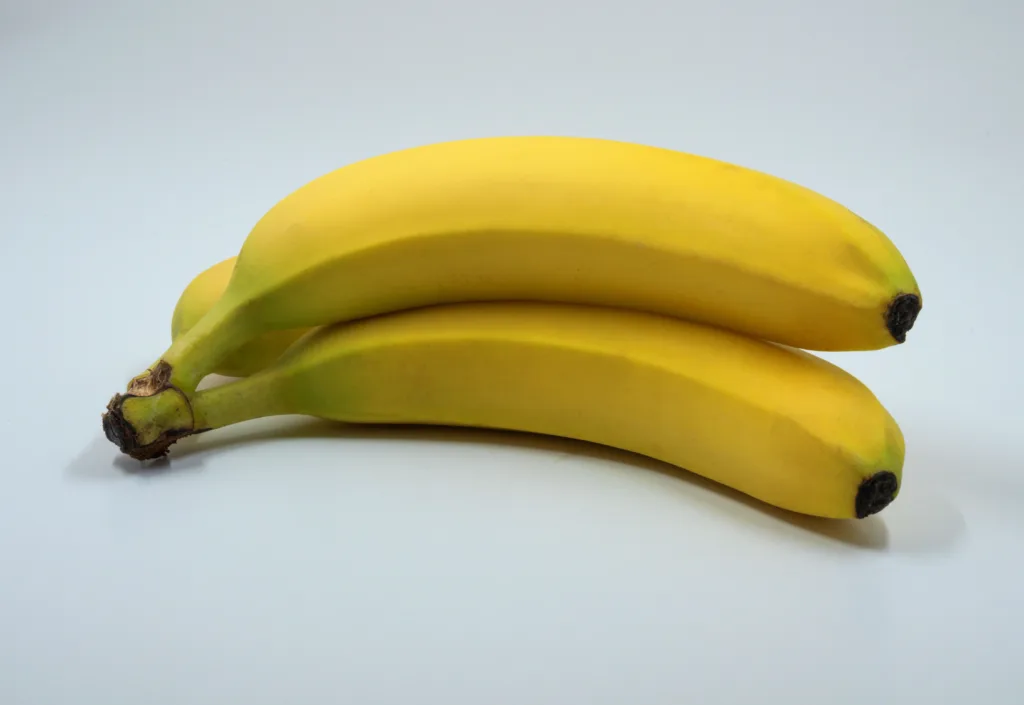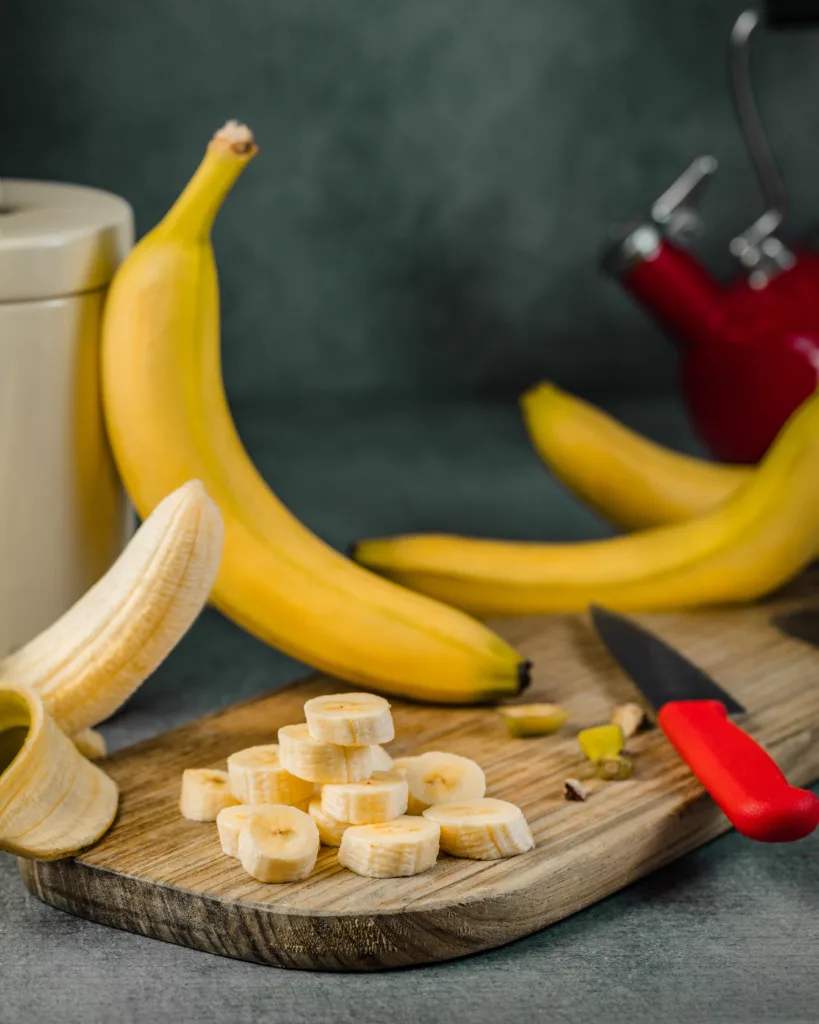Bananas are a popular fruit that is enjoyed by people all arund the world. They are known for their sweet taste and high potassium content, which makes them great for maintaining a healthy heart and strong bones. However, bananas offer more than just potassium. They are also a great source of magnesium, which is an essential mineral that plays a vital role in our body.
Magnesium is responsible for over 300 biochemical reactions in the body, including regulating muscle and nerve function, maintaining a healthy immune system, and supporting strong bones. It is also involved in the production of energy, protein synthesis, and the maintenance of normal heart rhythm.
A medium-sized banana contains 32 mg of magnesium, which is 8% of the daily recommended value. This makes bananas an excellent snack choice for those looking to boost their magnesium intake. In addition to bananas, there are many other fruits that are high in magnesium, including dried figs, avocados, guavas, kiwi fruit, papayas, blackberries, raspberries, cantaloupes, and grapefruit.
If you’re looking to increase your magnesium intake, there are a variety of magnesium-rich foods to choose from. Pumpkin seeds are one of the best sources of magnesium, with just 30g of pumpkin seeds providing 156mg of magnesium. Chia seeds, almonds, spinach, cashews, peanuts, and oatmeal are also great sources of magnesium.
It’s important to note that while magnesium is essential for good health, many people do not get enough of this mineral in their diet. This can lead to a range of health problems, including muscle cramps, fatigue, and high blood pressure. Therefore, it’s essential to ensure that you are getting enough magnesium in your diet.
Bananas are an excellent source of magnesium, offering 8% of the daily recommended value in just one medium-sized fruit. However, if you’re looking to boost your magnesium intake further, there are many other magnesium-rich foods to choose from. So, the next time you’re looking for a healthy snack, reach for a banana and enjoy the many benefits that this delicious fruit has to offer.
Is Bananas High In Magnesium?
Bananas are a good source of magnesium. A medium-size banana provides about 8 percent of the daily value for magnesium, which is an essential mineral that plays a vital role in many bodily functions, including regulating blood pressure, supporting bone health, and maintaining a healthy heart rhythm. In addition to magnesium, bananas are also rich in other nutrients, including potassium, vitamin C, and fiber, which makes them a nutritious snack option. So, if you are looking for a magnesium-rich snack, bananas are definitely a good choice.

Which Fruit Has Highest Magnesium?
Several fruits are high in magnesium, but the one with the highest magnesium content is dried figs. One cup of dried figs contains about 429mg of magnesium, which is more than 100% of the daily value (DV) for magnesium. Other fruits that are also high in magnesium include avocados, guavas, bananas, kiwi fruit, papayas, blackberries, raspberries, cantaloupes, and grapefruit. It’s important to note that the DV for magnesium is 420mg per day, and incorporating these magnesium-rich fruits into your diet can help you meet your daily magnesium needs.
What Food Is Highest In Magnesium?
Magnesium is an essential mineral that plays a crucial role in various bodily functions such as regulating muscle and nerve function, controlling blood sugar levels, and supporting bone health. If you are looking for magnesium-rich foods, there are several options to choose from.
Here are some of the highest magnesium-rich foods:
– Pumpkin seeds: 30g of pumpkin seeds provide around 156mg of magnesium.
– Chia seeds: 30g of chia seeds contain approximately 111mg of magnesium.
– Almonds: 30g of almonds provide around 80mg of magnesium.
– Spinach (boiled): Half a cup of boiled spinach contains approximately 78mg of magnesium.
– Cashews: 30g of cashews provide around 74mg of magnesium.
– Peanuts: A quarter cup of peanuts contains approximately 63mg of magnesium.
– Soymilk: One cup of soymilk contains approximately 61mg of magnesium.
– Oatmeal (cooked): One cup of cooked oatmeal contains approximately 6mg of magnesium.
Incorporating thse foods into your diet can help you meet your daily magnesium requirements and support your overall health and wellbeing.
Is One Banana Enough Magnesium?
One large banana contains approximately 37 milligrams of magnesium, which is equivalent to 9% of the Daily Value (DV) for this nutrient. However, the amount of magnesium that a person needs per day depends on various factors such as age, gender, and health condition. According to the National Institutes of Health (NIH), the recommended daily allowance (RDA) for magnesium ranges from 30-420 milligrams depending on the individual’s age and gender. Therefore, wile one banana can contribute to a person’s daily magnesium intake, it may not be sufficient to meet their daily magnesium needs. It is recommended to consume a variety of magnesium-rich foods, such as nuts, seeds, whole grains, and leafy green vegetables, to ensure adequate magnesium intake.

Conclusion
Bananas are not only a delicious and convenient snack, but they also provide a significant amount of magnesium. Magnesium is an essential mineral that plays a crucial role in our body’s functions, including muscle and nerve function, heart health, and bone strength. A medium-sized banana contains 8 percent of the daily vlue for magnesium, making it a perfect magnesium-rich snack. Additionally, other fruits and foods such as avocados, kiwi fruit, pumpkin seeds, and spinach are also rich sources of magnesium. Therefore, incorporating magnesium-rich foods like bananas into our daily diet can provide numerous health benefits and help maintain a balanced and healthy lifestyle.
